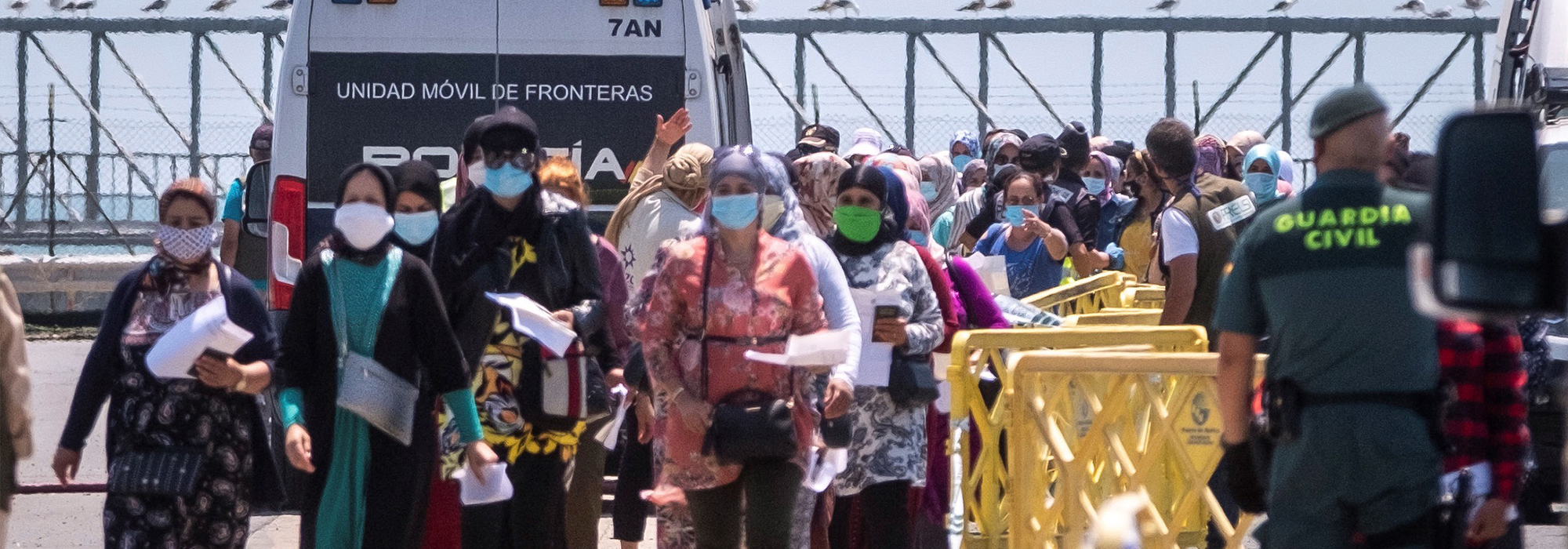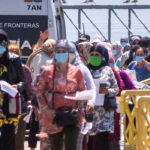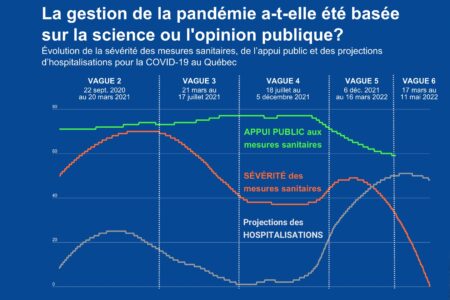
With global infectious disease outbreaks comes pressure on national governments to close their borders to citizens or residents of affected countries. Too many governments give way to this pressure. Border closures against high-risk regions, implemented by dozens of countries within the first two months of the COVID-19 outbreak (Figure 1), isolated vulnerable communities, devastated fragile economies, and disincentivized affected governments from reporting new cases of disease.
Targeted border closures also violated the International Health Regulations (IHR) — the legally binding instrument that governs how 196 countries respond to pandemics like COVID-19 — and that in turn undermines our global public health system and the rules-based world order on which we depend.
Note: As early as March 18, 2020, 18 countries had mandated quarantines for incoming travellers from high-risk regions like China, 55 countries had imposed bans against travel from high-risk regions, and 37 countries had enacted total border closures. March 18, 2020, was chosen as the map’s date of reference because several countries enacted total border closures on that day, including Canada, Georgia, Oman, Venezuela, and Somalia. Two months later, on May 18, 2020, 14 countries had quarantines for travellers from high-risk regions, 29 countries had bans against travel from these regions, and 113 countries had total border closures.
Targeted border closures are ineffective
In theory, targeted border closures prevent incoming travel from high-risk countries by non-citizens who might have been exposed to a pathogen, who might be carrying it and who might transmit that pathogen to others. If people from the most affected areas cannot leave their country, then it is reasoned that other countries will be safe from the pathogen, as there is no human vector through which the pathogen can travel.
The reality is not so simple. People find ways of travelling to their destinations if they really want to do so, either by first travelling to a third country, or by travelling through unofficial channels. There is also usually a gap between the time when governments announce border closures and when they can be implemented, provoking an immediate surge in travel that increases the risk of infectious disease transmission.
Available empirical evidence also supports the view that targeted border closures are likely to be ineffective. For example: temporary flight bans in the United States after September 11, 2001, did not stop or diminish that season’s influenza outbreak. Travel restrictions imposed by several countries against Mexico during the 2009 H1N1 influenza outbreak reduced travel by 40 percent but only delayed the virus’s arrival in other countries by less than three days. Case data from the first four months of the COVID-19 outbreak show that countries with targeted border closures against high-risk regions have fared no better than countries without targeted border closures (Figure 2).
Targeted border closures are illegal
In addition to their likely ineffectiveness, targeted border closures are also illegal. According to Article 43 of the International Health Regulations, countries are only permitted to enact “additional health measures” limiting travel during pandemics if such measures are supported by science, proportionate to the risks involved, and respectful of human rights.
The targeted COVID-19 border closures do not fulfil these three requirements. As described , the science around targeted travel restrictions points against their effectiveness. Second, targeted border closures are not proportionate to the risks involved, especially given better alternatives. Third, targeted border closures may violate human rights obligations when they unfairly discriminate against those who appear to be from the most affected countries.
What about total border closures?
More uncertain is the international legal status of total border closures, which have been enacted by at least 113 countries, including Canada. Whereas targeted border closures limit travel from particular countries perceived as high-risk, total border closures ban inbound travellers from all countries.
At first glance, many people might understand total border closures to be even more restrictive than targeted border closures and assume that they would be just as illegal under the International Health Regulations. Yet the purpose of limitations on travel restrictions was to avoid unnecessarily amplifying the economic and social consequences of public health risks in affected countries, and to avoid disincentivizing countries from reporting risks when they appear.
But total border closures do not primarily punish specific affected countries. Instead, most costs from total border closures are endured by the citizens and economies of the country that enacts them. Total border closures are also not opposed by empirical evidence because there is no empirical evidence on these kind of border closures. And the international legal principle of sovereignty points towards the ability of countries to close their borders in non-discriminatory ways.
Yet, if total border closures are enacted for public health reasons, then the International Health Regulations require countries to ensure “such measures shall not be more restrictive of international traffic and not more invasive or intrusive to persons than reasonably available alternatives that would achieve the appropriate level of health protection.” This provision means that countries are obliged to deploy less restrictive border measures if they are available and if they would attain comparable health protection in a non-discriminatory way.
Mandatory quarantine is a less restrictive alternative
For many countries, a reasonably available alternative to total border closures would be to temporarily quarantine all people entering a country. This policy option compels all incoming travellers to isolate for the maximum incubation period of COVID-19 (for example: 14 days) so that potentially asymptomatic and pre-symptomatic cases can safely be identified without the risk of spreading the coronavirus to others.
This option builds on a proven intervention – quarantine – and is at first glance non-discriminatory. This means that temporarily quarantining all travellers coming into a country would likely meet the International Health Regulations’ conditions, in that this measure is supported by science, proportionate to the risks involved, and respectful of human rights. And mandatory quarantine should be equally as effective as closing the border if fully implemented and enforced.
Border closures are symbolic acts to avoid blame
If targeted border closures are ineffective and illegal, and if total border closures are only theoretically effective and probably illegal, then why have at least 142 countries implemented one of these border-control measures?
The answer lies in the realities of politics. Even if governments know the science and international law of border closures, they will still feel compelled to enact them because of intense pressure from powerful domestic political actors who might otherwise blame them for not taking every possible action.
Therefore, in the context of a pandemic as significant and unprecedented as COVID-19, border closures are best regarded as powerful symbolic acts that help governments show they are acting forcefully, even if these actions are not epidemiologically helpful and even if they breach international law. Broad dramatic gestures like border closures can garner political support independent of whether they are effective or legal.
Furthermore, border closures have the additional political advantage of implicitly assigning blame for the health emergency to people or governments outside of one’s own country. They discourage citizens from reflecting on the frailty of their own country’s public health system or the consequences of past policy choices, like insufficient public health investment, that have led to their vulnerability.
The reality of border closures as symbolic acts means that these decisions must be subject to the usual political contestation that comes with political decisions in democratic societies. The challenge we have seen in the current COVID-19 pandemic is that governments have justified their border closures by citing expert advice apparently received from epidemiologists and legal counsel.
Essentially, political leaders have sought public support for their border closures by asking citizens to defer to government scientists and lawyers. But, of course, these decisions are not based only on science or law. They are political. And as a result, citizens must not acquiesce. Uncritical deferral to government leaders and other authorities on border closures, even in a pandemic emergency, undermines the systems of political accountability on which democracies depend.
A longer version of this piece can be found in Vulnerable: The Law, Policy and Ethics of COVID-19, edited by Colleen M Flood, Vanessa MacDonnell, Jane Philpott, Sophie Thériault and Sridhar Venkatapuram, out now and available open access from University of Ottawa Press.
This article is part of the Addressing Vulnerabilities for a More Equitable Pandemic Response special feature.











